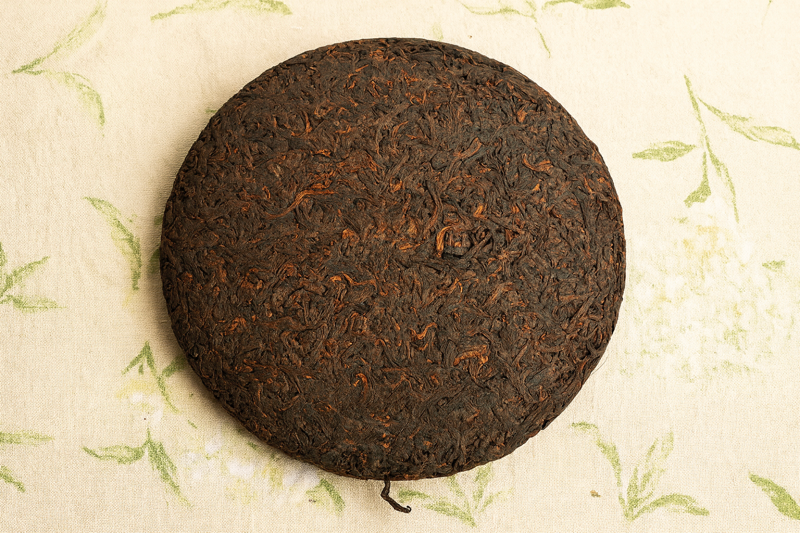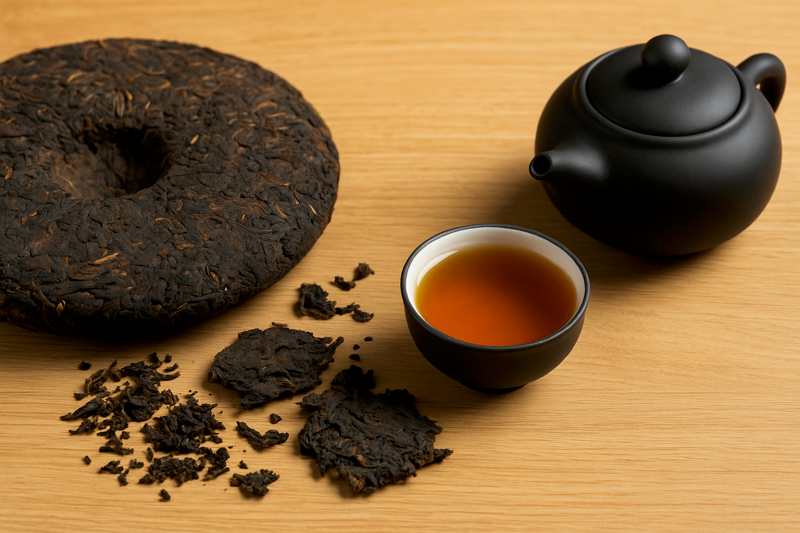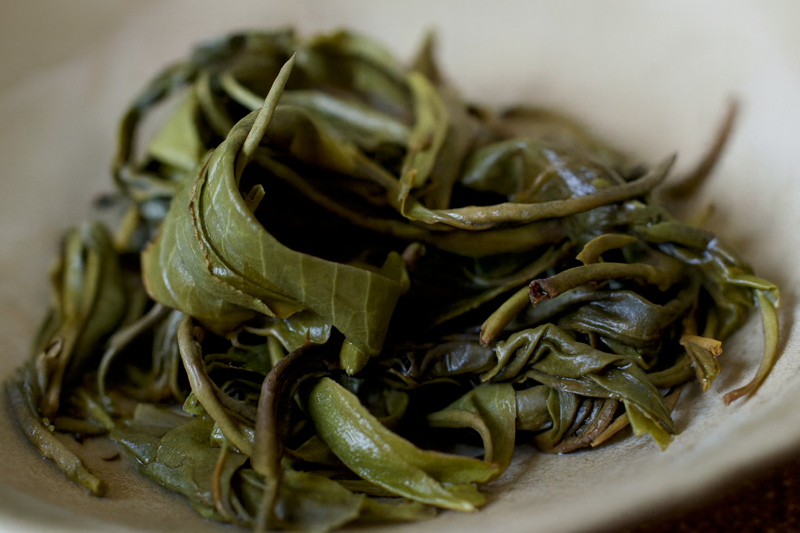Pu-erh Tea
Rich, mellow, and ancient — the living tea of Yunnan.
- Category: Fermented (dark) tea (Camellia sinensis), post-fermented.
- Origin: China — Yunnan Province, especially around Pu’er City.
- Harvest: Spring and autumn harvests; made from large-leaf Assamica variety tea trees.
- Grade: Sheng Pu-erh; Shou Pu-erh; Vintage Pu-erh



Tasting Profile
Brewing Guide
- Tea-to-water ratio~5 g leaves per 200 ml water (or ~1 g per 20 ml in Gongfu brewing).
- Water temperature95–100 °C (203–212 °F), boiling water is ideal.
- Steeping timeWestern method: 3–5 minutes.; Gongfu method: rinse leaves first, then steep 10–20 seconds, increasing time with each infusion.
- Infusions6–10 infusions (especially with Gongfu style); flavors deepen and evolve across steeps.
Background & Story
Pu-erh tea, named after the city of Pu’er in Yunnan Province, is one of China’s most distinctive and ancient teas. Unlike most teas, which are consumed fresh after processing, Pu-erh undergoes fermentation and aging, making it a “living tea” whose flavor evolves over time. This unique characteristic has earned Pu-erh a revered place in Chinese tea culture, with prized vintages valued much like fine wines.
The tea is produced from the large-leaf Camellia sinensis var. assamica grown in Yunnan’s mountainous regions. The leaves are first processed into mao cha (rough tea) and then either naturally aged (sheng pu-erh) or fermented through an accelerated process (shou pu-erh), developed in the 1970s. Sheng Pu-erh, or “raw” Pu-erh, can be consumed young, with bright, astringent flavors, or aged for decades, developing complex, smooth, and sweet profiles. Shou Pu-erh, or “ripe” Pu-erh, is fermented under controlled conditions to mimic the character of aged tea, producing earthy, mellow, and dark flavors in a shorter time.
Historically, Pu-erh was pressed into cakes, bricks, or tuo cha (bird’s nest shapes) to make it easier to store and transport along the ancient Tea Horse Road, where it was traded extensively across Tibet, Mongolia, and beyond. Its durability and ability to improve with age made it a valuable commodity.
Pu-erh is also steeped in cultural and medicinal significance. In traditional Chinese medicine, it is believed to aid digestion, reduce grease and cholesterol, and restore balance after heavy meals. Its earthy, grounding nature has made it a staple in southern Chinese dining culture, often served with rich or oily foods.
Today, Pu-erh is enjoyed worldwide, valued not only for its unique taste and health benefits but also for the artistry and patience behind its creation. Each cup offers a connection to centuries of tradition, trade, and craftsmanship.
Benefits
- Supports digestion and helps reduce heaviness after rich meals
- May aid cholesterol management and support heart health
- Provides antioxidants that protect against oxidative stress and aging
- Offers gentle, sustained energy from caffeine balanced with smooth flavor
- Traditionally valued for weight management and detoxifying properties
Serving Suggestions
Pairings
- Rich, fatty meats such as roasted duck or pork belly
- Dim sum classics like shumai, baozi, or spring rolls
- Stir-fried noodles or rice dishes with soy-based sauces
- Aged cheeses or earthy mushroom dishes
- Dark chocolate or mildly sweet pastries for a balanced finish
Teaware
- Yixing clay teapot (retains heat and enhances earthy depth of Pu-erh)
- Gaiwan (versatile for Gongfu brewing and multiple infusions)
- Pu-erh pick/knife (for breaking compressed tea cakes safely)